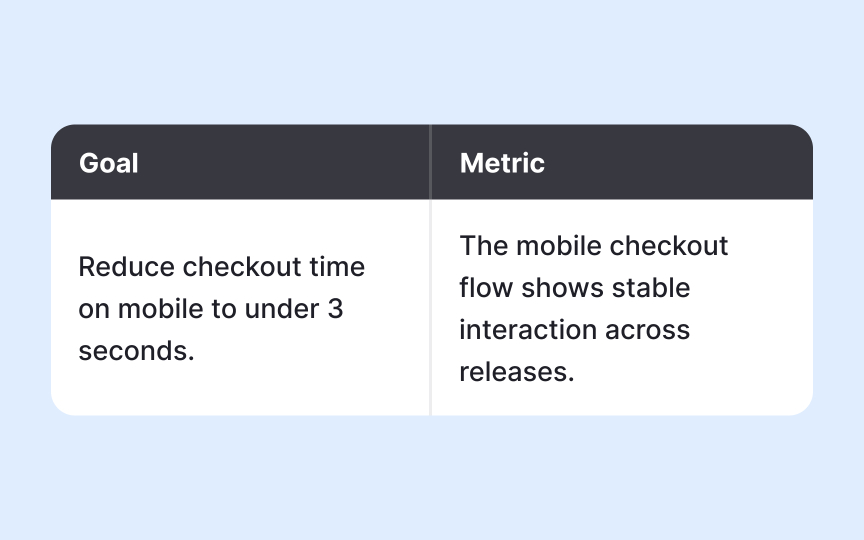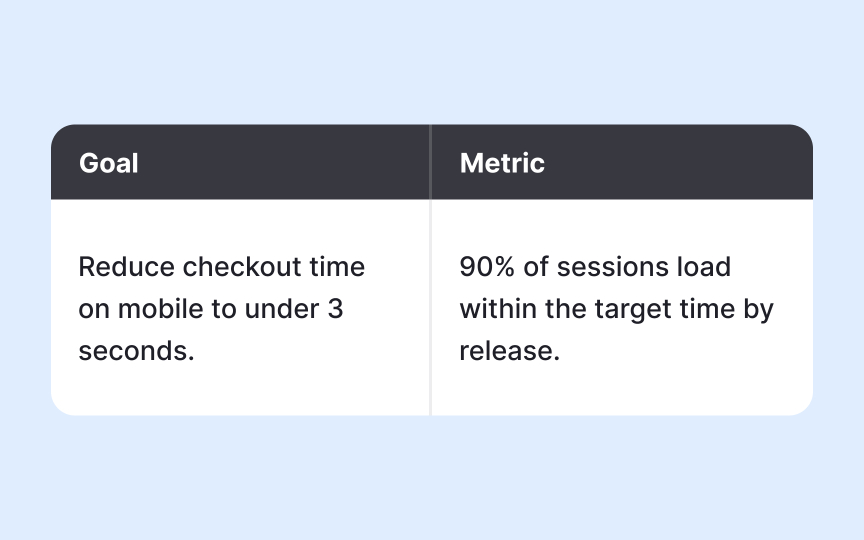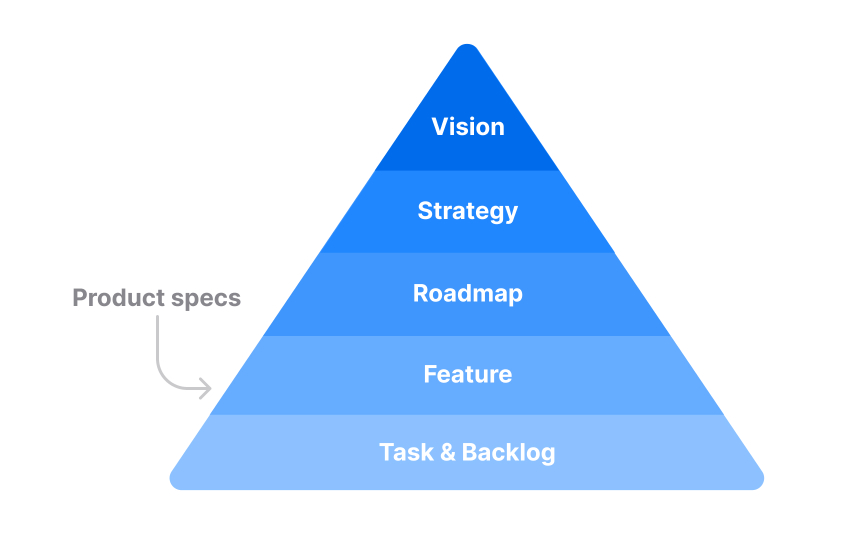Best Practices from Real Teams
Turn product specs into practical tools that improve alignment, clarity, and delivery speed in real teams.
High-performing teams treat product specs as living documents that guide decisions and connect planning with execution. Instead of creating long reports, they focus on clear, concise writing that defines what to build, why it matters, and how success will be measured. Well-written specs help teams think critically before development begins, align across disciplines, and reduce the risk of rework caused by unclear expectations.
Effective specs often rely on good habits rather than strict templates. Teams that collaborate early, define measurable goals, and stay open to feedback create stronger alignment and shared accountability. Product managers who record assumptions, provide context, and refine their specs through reviews turn them into reliable references that everyone can trust.
This way of working balances agility with structure. It keeps communication clear, supports faster delivery, and ensures that every decision connects to both user needs and business goals.
Well-run teams treat a product spec as a safety net that keeps small oversights from becoming costly mistakes. Imagine a team that decides to launch a new booking flow without documenting the details. Once it’s live, they realize that data tracking was never set up, translations are missing, and the feature performs poorly on mobile. Each fix takes time and weakens confidence in the release.
If the same team had outlined assumptions, success criteria, and technical dependencies in advance, these problems would have been caught earlier. Writing a spec transforms loose ideas into structured thinking. It turns hidden risks into visible questions that the team can solve before coding begins. This clarity helps everyone understand the scope, reduces rework, and increases trust in the process.[1]
Pro Tip: Use a spec to reveal what could go wrong while it’s still easy to fix.
Clarity is the foundation of a strong product specification. When a document is easy to read, people understand what needs to be done and why it matters. Confusion often appears when writing tries to sound overly formal or includes too much detail instead of focusing on what is essential.
For instance, instead of writing “The system shall ensure appropriate measures for maintaining user engagement metrics”, a clearer version would be “The app should track how many users return each week to measure engagement.” The idea stays the same, but the meaning becomes immediate and measurable.
To make writing clear and practical, teams often focus on these principles:
- Use concrete language. Replace abstract ideas with specific goals, such as “reduce checkout time by 20%” instead of “make checkout faster.”
- Structure information visually. Divide sections with subheadings, bullet points, or tables so readers can scan and find what they need.
- Keep sentences short. Each line should express one thought to reduce the risk of misinterpretation.
- Avoid filler and repetition. Eliminate phrases that add no meaning, like “it is important to note that” or “in order to.”
- Stay neutral in tone. Objective wording builds trust and keeps the document focused on facts rather than opinions.
Pro Tip: Write as if the reader knows nothing about the project. True clarity leaves no room for guessing.
A strong spec is rarely written alone. Collaboration helps uncover blind spots early and turns individual thinking into team alignment. The best teams review specs in short, focused sessions where each participant contributes from a specific perspective.
Early feedback works best in small groups. A designer, engineer, and product manager can validate ideas and identify risks before a wider review. Once the draft feels complete, a final round with key stakeholders ensures shared understanding and approval.
Clear expectations keep reviews productive. Everyone should know their role: who gives feedback, who approves, and who just needs awareness. This prevents endless edits and keeps discussions action-oriented.
To make reviews effective:
- Share early drafts to expose unclear assumptions.
- Keep groups small to maintain focus.
- Time-box discussions to avoid fatigue.
- Summarize changes after each round.
Pro Tip: Invite feedback when the spec is 70% ready. Early input is easier to act on than late criticism.
A spec’s main purpose is to keep everyone moving in the same direction. It connects goals, decisions, and progress so teams can act with confidence. Alignment breaks when the document stops reflecting reality or when updates are not shared.
Clear ownership keeps the spec alive. One person should be responsible for updating it as decisions change. Communicating updates to all involved prevents outdated versions from circulating. Linking the spec to project tasks also helps ensure daily work supports the same goals.
To preserve alignment during development:
- Keep goals visible and link every task back to them.
- Update regularly when feedback or priorities shift.
- Announce major changes to avoid confusion.
- Store past versions to track decisions over time.
Pro Tip: A clear, updated spec is the simplest way to prevent miscommunication in complex projects.
Strong teams treat specs as working tools, not documents to file away. A good spec lives inside the team’s daily rhythm. It shapes sprint planning, informs decisions, and gets refined as the project evolves. When teams stop using the spec, it quickly loses its purpose and becomes background noise.
Keeping a spec alive means referring to it regularly and updating it when something changes. Many teams attach relevant links, prototypes, or metrics directly to the spec so it stays the central source of truth. Instead of being a static artifact, it becomes a shared workspace that reflects ongoing progress.
When specs are written with this mindset, they guide action without interrupting the flow of work. The team always knows where to look for context, and new members can join without long explanations. A living spec documents how the product is built and why decisions were made.
Pro Tip: Treat the spec as part of the workflow, not a side task. If it’s never opened after writing, it’s too detached from real work.
A good spec does not stop at describing the next release. It also explains how a feature contributes to the broader product strategy. This context helps teams make decisions that stay aligned with long-term goals rather than focusing only on immediate delivery.
When the purpose behind a feature is clear, trade-offs become easier to judge. A team can confidently say no to ideas that do not support the main direction or postpone them for later iterations. Even a short paragraph outlining the
A spec written with this perspective provides direction and consistency across releases. It helps new contributors understand how their work fits into the bigger picture and keeps the entire team moving toward the same destination.
A useful spec speaks the language of its readers. Product managers, engineers, and executives often look for different information, so the document should guide each group quickly to what they need.
Engineers care about scope, dependencies, and technical details. Designers want to confirm user flows and constraints. Stakeholders look for goals, impact, and timelines. Organizing the spec with clear sections and visual cues helps everyone find their part without reading the entire text.
Good teams write with empathy for the reader. When readers feel the document respects their time and needs, they engage more actively and give more relevant feedback.
Pro Tip: Before sharing a draft, reread it from another role’s perspective. The best specs make sense even to someone outside your domain.
A spec improves through revision, not perfection. Real teams expect to adjust their documents as new information appears. Feedback from testing, design exploration, or stakeholder review often reveals what was unclear or incomplete.
Treating feedback as part of the process keeps the spec relevant and useful. Updates should focus on clarifying goals, resolving contradictions, or reflecting new decisions. Teams that document why changes were made avoid confusion later and create valuable context for future projects.
Iteration also prevents overplanning. Writing, sharing, and refining in short cycles ensures that specs grow alongside the product instead of holding it back. Each version becomes a snapshot of current understanding, helping teams move forward with confidence.
Pro Tip: Keep every update visible. A transparent change history builds trust and shows how decisions evolved.























